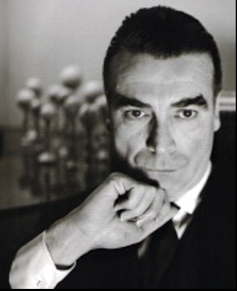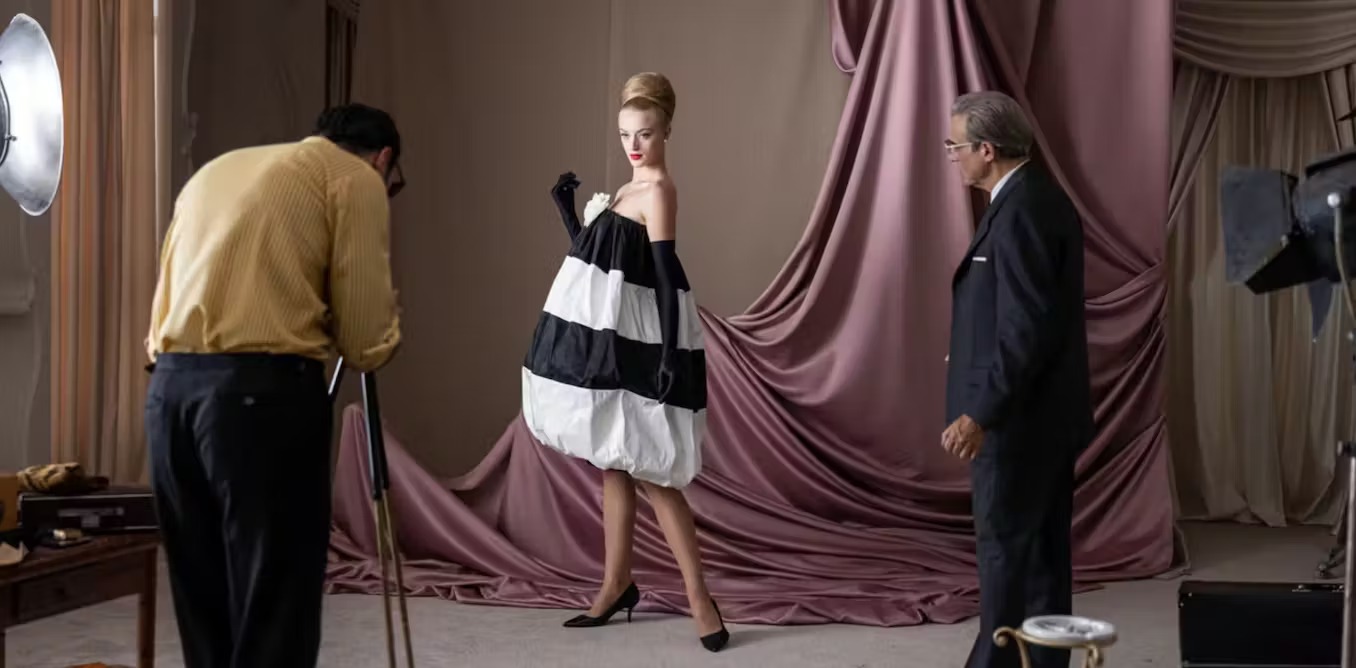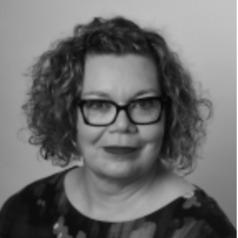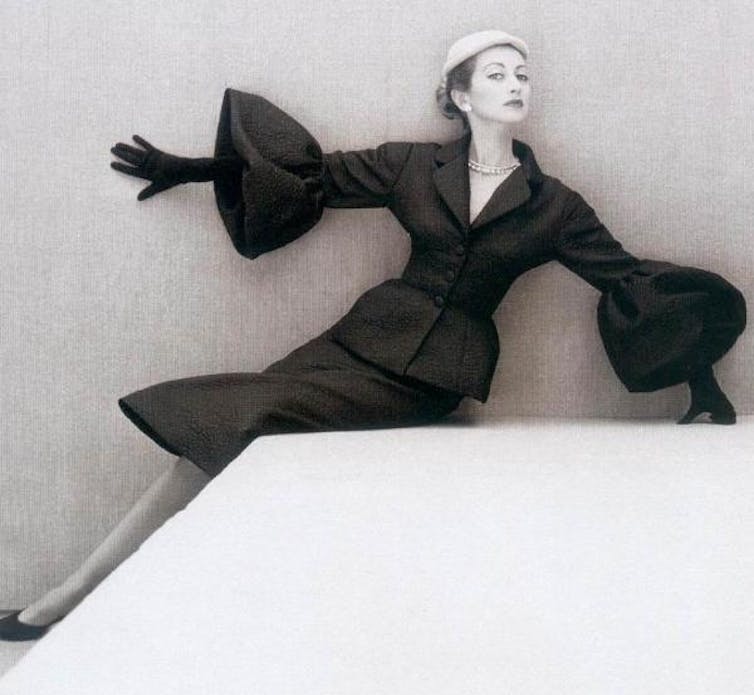Born in a small Basque fishing village on the northern coast of Spain at the end of the 19th century, Cristóbal Balenciaga (1895-1972) went on to become one of the most innovative and influential fashion designers of the 20th century – and the king of fashion in Paris.
His dedication to the craft of dressmaking and tailoring was fostered by his seamstress mother and acknowledged by local Spanish aristocracy who recognised his talents. A marquesa’s patronage led to a tailoring apprenticeship in San Sebastián, where he opened his first dressmaking business in 1919 at the age of 24, and later an atelier in Madrid.

Cristóbal Balenciaga. Louise Dahl-Wolfe, 1950 / WIkipedia, CC BY
His faultless fit and exceptional skills in cutting, assembling, constructing and sewing garments by hand would earn him a uniquely respected position within the high-fashion world of Paris, where he opened his maison in 1937.
Balenciaga’s life and work are currently being explored in a six-part Spanish biographical drama on Disney+. The series details the story of the man who became known as “the master” of haute-couture fashion for his innovative womenswear designs and distinctive use of textiles during his years in Paris, from 1937 to 1968.
The new Disney series stars Alberto San Juan as Balenciaga and is structured around the designer recalling the events of his life and career during a rare interview in 1971 with the Times’ fashion editor Prudence Glynn (Gemma Whelan).
Fashion for a post-war world
We meet Balenciaga in 1937, a year after accepting the coveted elite status of “couturier”, conferred by the exacting standards of the Chambre Syndicale de la couture Parisienne. Balenciaga’s tailoring and dressmaking skills, as well as his innovative designs, were crucial to the success and lasting impact of mid-20th century haute couture – a fact that is carefully portrayed in the series.
While artistic licence embellishes intimate and emotional moments in the series, it is broadly historically accurate, including the relationships and rivalries between fellow couturiers Coco Channel (Anouk Grinberg), Christian Dior (Patrice Thibaud) and the mentorship of Hubert de Givenchy (Adrien Dewitte).
In episode two – The Occupation – when Balenciaga’s nervous investor visits Chanel to ask if the designer can succeed in Parisian high fashion, her famous response is resounding: “Cristóbal is the only authentic couturier amongst us. The rest, we are simply just fashion designers.”
The series follows the turbulent political and economic times for fashion in the mid-20th century. Designers had to protect their reputations and creative integrity from invading armies and corporate spies. Meanwhile, artisanal couture traditions of fashion design had to contend with the rise and expansion of the mass manufacturing of prêt-à-porter (ready-to-wear) fashion.
An exciting element of Balenciaga’s influence within couture was his inspired use of Spanish traditional dress and Catholic vestments and regalia, which he incorporated into his collections.
During episodes one and two we watch him struggle to define his maison’s style until he revisits his historic art and costume books to seek inspiration. This engagement with the cultural memory of dress, reveals there is authenticity, meaning and depth to his creations that emerge from his Spanish roots.
Christian Dior famously referred to Balenciaga as “the master of us all”, and the Spaniard was admired for his technical genius and innovation by fashion journalists, critics, clients, employees and his peers within haute-couture circles.
The emerging prêt-à-porter designers, many of whom he mentored, carried his design principles into their luxury mass-manufactured clothing lines, including Givenchy, André Courrèges and Emanuel Ungaro.
Industry and passion
This is a series written, directed and art-directed by those who respect the place of ideas, skill and innovation within the practice of making designed objects. Balenciaga’s magic is grounded in driven, tireless dedication to an art form. Everywhere we see hands, tools, textiles manipulated, cut, folded, sewn, adjusted, and eventually formed on a body ready to be seen and, ultimately, sold.
This is an exceptional aspect of this series, and a joy to see. In the final episode – I am Balenciaga – the Spaniard grapples with the future of couture and his maison against a booming background of prêt-à-porter. He realises one of his options is to retire and pass on the reins to a trusted collaborator. However, he states: “It wasn’t just a business, it was part of me, like an extension of my body. How can a body survive without a brain?”
Cristóbal Balenciaga vintage suit, 1951. Bianca Lee / flickr, CC BY-SA
Another interesting aspect of the series is the growing power of the media to influence the pace of change within fashion markets. An important character throughout the series is Carmel Snow (Gabrielle Lazure), the fashion chief of the American edition of the highly influential lifestyle magazine Harper’s Bazaar. Snow had the power to make or break the fortunes of even the greatest of couturiers for, without magazine exposure, there would be no customer interest, nor orders.
Interestingly, episode four – Replicas – shows the start of the debate for the current systems of biannual fashion weeks, in order to limit press access to regular intimate couture shows at maisons for fear of copies and counterfeits emerging.
This series is highly recommended and stands as an important piece of dramatised fashion history. As what we wear is a facet of our identity, fashion is at the heart of both everyday and extraordinary events. This series is testament that designing, making and promoting dress will always involve passion and drama.



 Bitcoin's Bullish Signals: ETFs, Whales, and Key Technical Levels
Bitcoin's Bullish Signals: ETFs, Whales, and Key Technical Levels  Fontaines D.C. Dublin Concert: Fans Battle Storm Darragh for Tickets in a Night of Musical Magic
Fontaines D.C. Dublin Concert: Fans Battle Storm Darragh for Tickets in a Night of Musical Magic  BTS Jungkook Smashes Spotify Records: ‘GOLDEN’ Reigns Supreme Over K-Pop Charts, Fans Say ‘Unstoppable!’
BTS Jungkook Smashes Spotify Records: ‘GOLDEN’ Reigns Supreme Over K-Pop Charts, Fans Say ‘Unstoppable!’  Cobra Kai Creator’s Thanksgiving Message: 'Karate Kid Fans Are a Sleeping Giant!' as Final Season Approaches
Cobra Kai Creator’s Thanksgiving Message: 'Karate Kid Fans Are a Sleeping Giant!' as Final Season Approaches  Brad Pitt and Angelina Jolie End an Eight-Year Divorce Saga in Shocking Christmas Resolution
Brad Pitt and Angelina Jolie End an Eight-Year Divorce Saga in Shocking Christmas Resolution  Gold's Rally Fades: Selling Opportunity on Trade Optimism?
Gold's Rally Fades: Selling Opportunity on Trade Optimism?  Toni Braxton’s Niece Reveals Painful Childhood, Shocking Claims of Abuse and Abandonment Stir Controversy
Toni Braxton’s Niece Reveals Painful Childhood, Shocking Claims of Abuse and Abandonment Stir Controversy  Why Silver Could Outshine Gold After Its Record Run
Why Silver Could Outshine Gold After Its Record Run  A Passage to India: how global pandemics shaped E.M. Forster’s final novel
A Passage to India: how global pandemics shaped E.M. Forster’s final novel  Surge in U.S. RedNote Users Ahead of TikTok Ban
Surge in U.S. RedNote Users Ahead of TikTok Ban  Silver Gains Momentum: Gold-Silver Ratio Signals Potential Breakout
Silver Gains Momentum: Gold-Silver Ratio Signals Potential Breakout 
































